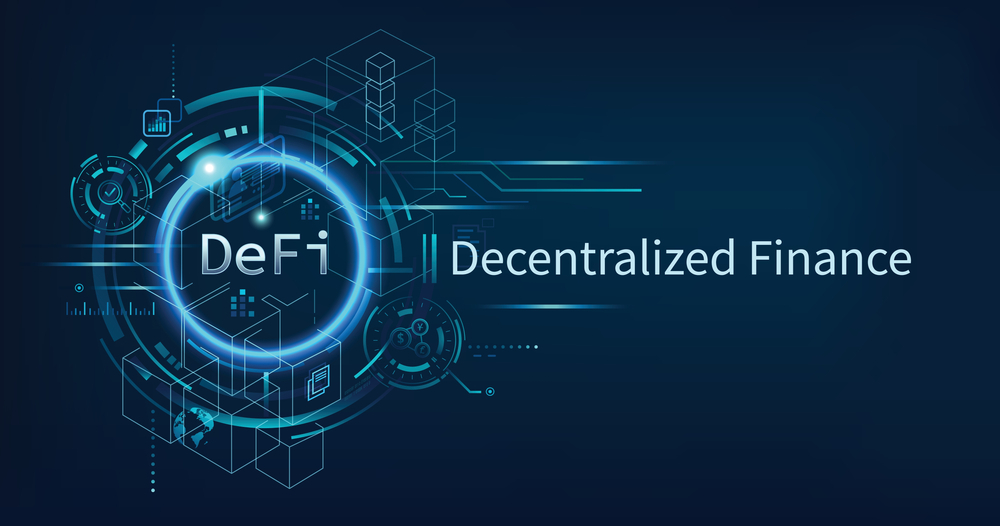Discover the fascinating new idea of DeFi, which has taken the world by storm with applications like Staking, Swapping, and Farming.
Why does the idea of a Decentralised future appeal to people so much? Cryptocurrency offers us a world in which trade and money can proceed unhindered. But how does abolishing Centralised authorities actually alter the world?
Understanding how the various widely used Decentralized Finance (DeFi) applications function and reimagine user experience is the greatest way to grasp the scope of what’s in store for us.
Decentralized Finance, or DeFi for short, is a new financial technology that aims to do away with middlemen in financial transactions. DeFi, which has made several new revenue streams available to investors, is essentially a set of financial services that operate on open blockchains. DeFi tokens can be traded as speculative cryptocurrency investments, cryptocurrency exchange, lent, borrowed, or traded for interest.
Since the middle of 2020, the DeFi industry has grown dramatically. DeFi is transforming banking and financial services in the same way that artificial intelligence and machine learning are revolutionising the wealth management sector. The fact that it does away with the necessity for financial bureaucracy is largely responsible for its growth. DeFi is practically permissionless because to its flexibility, which also makes third-party integrations easier to support.Everything is now more transparent and traceable thanks to blockchain.

Composability, which enables anyone to mix current DeFi offers to build a new one, is another compelling feature. Future financial breakthroughs may be easily constructed on top of and connected to such a network because to its scalability, all under the control of smart contracts.
DeFi has demonstrated to the world that decentralising financial services at scale is possible, despite the sector still being in its infancy. The emergence of DeFi has also given rise to a number of DeFi ideas that are altering the financial environment. The three most popular ones are DeFi farming, DeFi trading, and DeFi staking. Let’s examine these ideas in greater detail.
Emerging DeFi concepts reimagine the future of finance
Staking
DeFi staking entails securing one’s cryptocurrency tokens in a smart contract in an effort to increase the number of tokens one receives in return. Think of it as the decentralised equivalent of making a fixed deposit with a bank. Decentralized Finance (Decentralized Finance) staking has become a new technique to profit from your crypto assets since the introduction of crypto and Decentralized Finance.
In order to become a validator for the DeFi protocol or a Layer 1 blockchain, the DeFi staking procedure entails securing cryptocurrency assets into smart contracts. The native asset of the blockchain system is typically the staking token.
In essence, when users stake or lock their crypto asset in a DeFi system, they join the network’s validators. These validators are essential to the security of every proof-of-stake blockchain protocol. Through staking rewards, those who have staked a portion of their token to support network security are recompensed.
Let’s examine a case in point.
Let’s say a token owner using Ethereum locks or stakes his token in the Ethereum 2.0 smart contract. He will then receive additional ETH as compensation for his assistance with network security. Since every procedure is automated, there is no need for manual supervision.
Once he has staked or deposited a token into the smart contract, the proof-of-stake process will handle the rest. He only needs to perform the staking rewards claim after that.

DeFi staking, without a doubt, offers an easy and clear way to get started with crypto assets while avoiding the high costs related to trading money. You don’t need need to manage private keys, acquire resources, close deals, or carry out any other onerous tasks to take part in DeFi Staking because many people already do these things. Staking tokens will help users like you profit passively from their digital assets. The potential interest rates will be far higher if you stake DeFi tokens, and a very secure smart contract will protect them.
Swapping
In a decentralised society, there are few limitations on how you can handle your assets or where you can put them. Another asset transfer mechanism in DeFi is Swapping, which is automated. In essence, a token swap is a mechanism that allows investors to exchange their old tokens for new ones.
Token switching is only possible with a DeFi protocol, such as a decentralised exchange that, in contrast to centralised exchanges, uses the AMM (automated market makers) mechanism and has smart contract code that is specifically written to enable token swapping. Since they are not custodial, these exchanges rely on the liquidity that users generate through yield farming or liquidity mining. Token swapping is only managed by smart contracts because of decentralisation.No input from the exchange is necessary, and there are no factors that could cause human error.
Farming
In DeFi, yield farming refers to the practise of lending or staking your digital currency in return for transaction costs or interest. This is comparable to getting interest on money lent to the bank or lending to a borrower on contemporary (but centralised) P2P marketplaces.
Like when a bank accepts a customer’s deposit and pays him a set percentage of interest before loaning the same sum to a different customer at a greater interest rate, users move their cryptocurrency constantly between different lending marketplaces in a decentralised protocol to maximize their returns. With DeFi, a smart contract that takes the place of a centralised organisation lowers expenses and boosts efficiency.
In essence, yield farming approaches encourage liquidity providers (LPs) to stake or lock up their crypto assets in a liquidity pool based on smart contracts. Incentives can include a portion of transaction fees, interest from lenders, or a governance token; these rewards are often stated as an annual percentage yield (APY).

Initially, the bulk of yield farmers staked recognisable stablecoins like USDT, DAI, etc. However, today’s most well-liked DeFi protocols operate on the Ethereum network and compensate liquidity providers with governance tokens. Tokens are farmed in these liquidity pools in exchange for supplying liquidity to decentralised exchanges.
The Conclusion
The future of centralised finance organisations will undoubtedly be greatly impacted by DeFi, which is rapidly developing and expanding to mimic the traditional financial services ecosystem. Along with giving investors new revenue streams, it has also changed the financial industry in ways that have never been seen before.
To Read More Tech Blogs Visit: Technical Nick

















